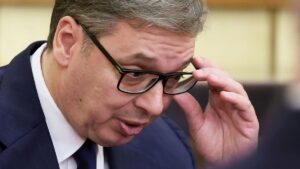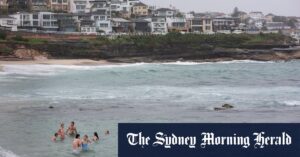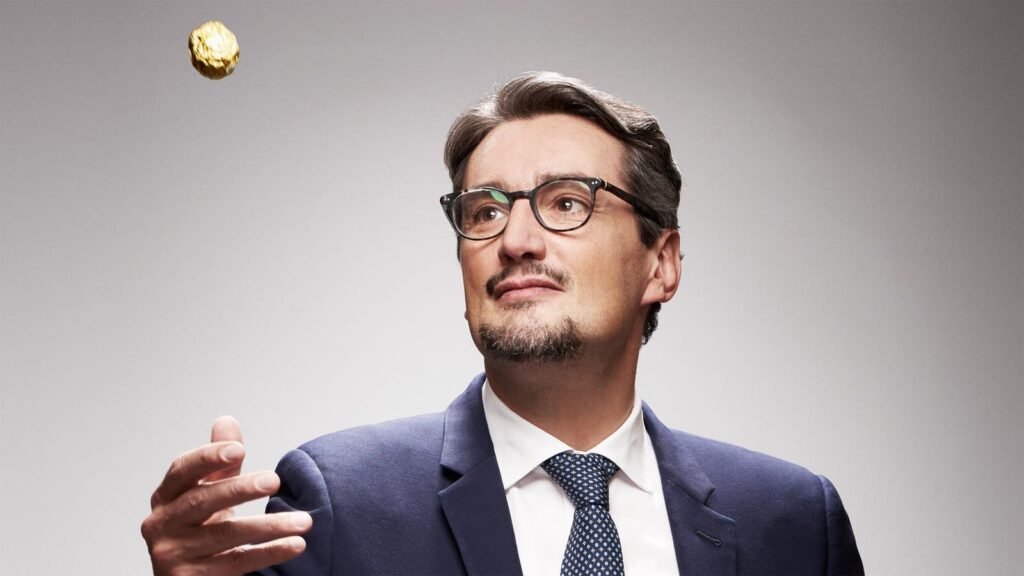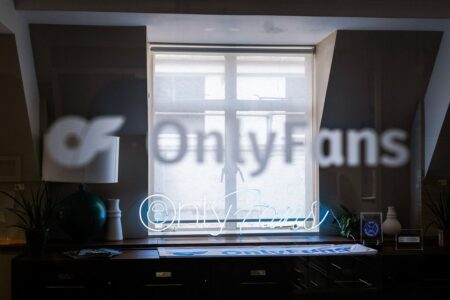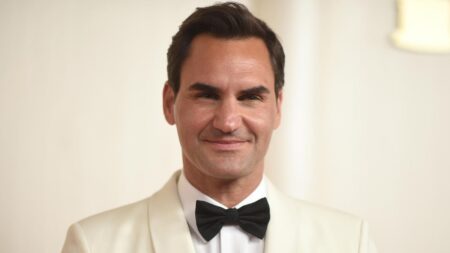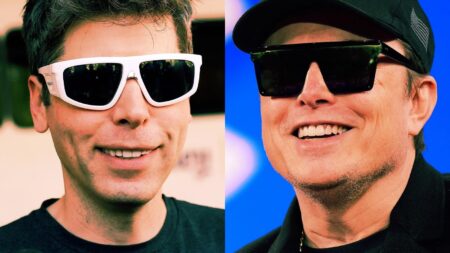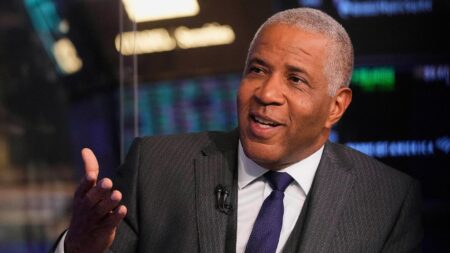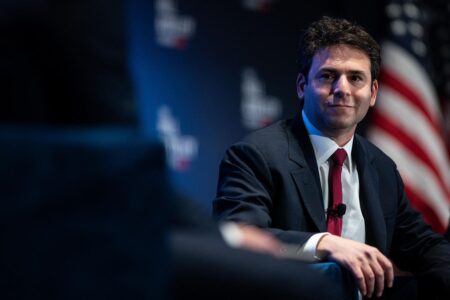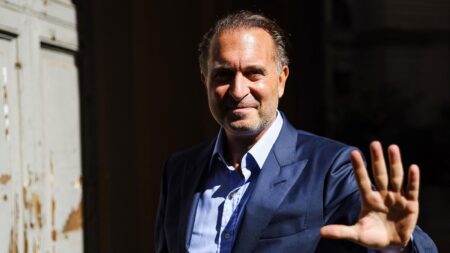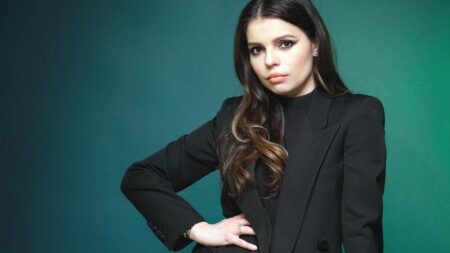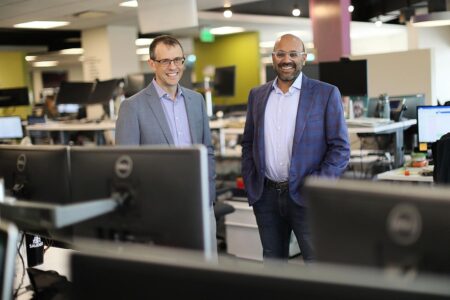Since he became the sole leader of his family’s candy maker in 2015, executive chairman Giovanni Ferrero has expanded beyond well-known brands like Nutella and built a global powerhouse—especially through big acquisitions in the U.S.
When Italian candy and food giant Ferrero announced it would acquire WK Kellogg— the cereal maker behind Froot Loops and Corn Flakes—for $3.1 billion on Thursday, it wasn’t just one of the largest deals in the food industry in the past year. It also marked the crowning achievement of Giovanni Ferrero, the billionaire executive chairman and majority owner of his family’s company, who has led a decade-long campaign to evolve his Italian brand well beyond European chocolate treats and turn it into a food powerhouse in the United States.
Forbes estimates the firm has spent more than $13 billion (including the deal announced Thursday) buying up at least 21 companies in nine countries in the past 10 years, ranging from a snack producer in Brazil to a butter cookie maker in Denmark.
“Over recent years, Ferrero has expanded its presence in North America, bringing together our well-known brands from around the world with local jewels rooted in the U.S.,” Ferrero said in a statement on Thursday. “Today’s news is a key milestone in that journey, giving us confidence in the opportunities ahead.”
Giovanni took over sole leadership of the company—best known for its chocolate hazelnut Nutella spread and Ferrero Rocher gold-wrapped chocolates—after the death of his father, Michele Ferrero, in 2015. As the head of the third generation leading the company, Ferrero set about on a deal-making splurge to grow the business while diversifying from its focus on chocolates. It’s been a winning strategy: since 2015, the firm nearly doubled revenues to $20.4 billion in the year through August 2024. And it nearly doubled EBITDA (earnings before interest, tax, depreciation and amortization) as well, to $3 billion up from $1.6 billion in 2015. A representative for Ferrero didn’t immediately respond to a request for comment.
It’s also been good for the Ferrero family’s fortune. Giovanni Ferrero, 60, owns 75% of the company and is now worth an estimated $41.2 billion, up from $23 billion when he first joined Forbes’ World’s Billionaires List in 2018. He’s currently the 6th richest person in Europe and the 36th richest on the planet. The rest of the firm is owned by at least five other heirs of Pietro Ferrero, Giovanni’s grandfather, who founded the business in 1946 in Alba, a town near Turin in northwest Italy.
The mammoth deal for WK Kellogg is set to turbocharge the firm’s growth in the U.S., where it has already made at least eight acquisitions since 2017, including picking up Nestlé’s U.S. candy business in 2018 for $2.8 billion and then adding Kellogg’s cookie and fruit snack business the following year, for $1.3 billion. Those purchases brought brands ranging from Famous Amos and Keebler to Nerds and Butterfinger under the Ferrero umbrella. With WK Kellogg recording $2.7 billion in revenues in 2024, the deal could grow Ferrero’s sales by more than 10%.
“The tie-up will diversify Ferrero beyond its core confectionery and snacking fare to include WK’s domestic cereal mix,” says Erin Lash, an analyst at Morningstar. “Ferrero’s strategic rationale is likely anchored in WK’s ability to generate cash and its stable revenue base. This would follow Ferrero’s efforts to expand its footprint in the U.S.”
Despite being Italy’s richest person, the press-shy Giovanni Ferrero lives in Brussels, Belgium, while the company is headquartered in Luxembourg. After growing up around the family business, he went to boarding school in Belgium with his older brother Pietro in the late 1970s before leaving Europe in 1980 to study marketing at Lebanon Valley College in Pennsylvania.
In 1997, his father Michele tapped his two sons, Giovanni and Pietro, to run the business as co-CEOs. At the time, Ferrero had already expanded across Europe and had $4.8 billion in annual revenue. For the next 14 years, the brothers grew Ferrero’s in-house brands, giving little thought to acquisitions.
But in 2011, Pietro died of a heart attack at age 47 while biking in South Africa, leaving Giovanni as the sole CEO. When Michele passed away four years later at age 89, Giovanni was left completely alone at the helm. Almost immediately, he set about reorganizing the company, dividing up Michele’s 100% stake among the family’s heirs. He also began looking for brands to buy, starting first with British chocolatier Thorntons for $170 million in 2015.
In 2016, he set up a Belgian holding company called CTH Invest to buy other brands in the food and chocolate business. CTH made its first deal that December, picking up Belgian cookie maker Delacre for an undisclosed sum. A year later, he handed over the CEO job to Lapo Civiletti, the first non-family member in the role, while he settled into his position as executive chairman overseeing long-term strategy—and, yes, acquisitions. The pair still run the company together.
Giovanni spoke to Forbes in a rare interview in 2018 from Ferrero’s original factory in Alba, where the company still makes some of its best-selling products, including Kinder chocolate bars and Nutella, that made it a global powerhouse.
“I feel like we are duty-bound to grow,” he said back then, pointing to his plan to increase the company’s sales by 7.33% each year in a bid to double its size over ten years. “We are in love with a growth algorithm of 7.33 periodic because, organic or nonorganic, that would double the company in a ten-year time horizon.”
Seven years later, he’s on track to exceed that goal: Ferrero grew revenues by 84% between 2017 and 2024, meaning the firm can underperform that 7.33% over the next three years and still meet his target. And with the WK Kellogg deal, Ferrero stands to benefit from a larger presence in U.S. grocery stores. “In light of the sheer size of the North American cereal aisle (which generates $12 billion in annual retail sales), this addition stands to buoy [Ferrero’s] bargaining power with retailers,” adds Lash at Morningstar.
The decade of deals has also brought Ferrero closer to its largest competitors. With the WK Kellogg acquisition, Ferrero’s revenue is now set to surpass that of candy and pet food giant Mars’ snacking business, which brought in an estimated $21.3 billion in 2024 from products ranging from M&Ms and Snickers to KIND bars and Orbit gum, at least for the time being. Mars is still waiting for European regulators to clear its proposed $36 billion takeover of Kellanova, another arm of the former Kellogg company, with brands including Rice Krispies Treats and Pringles. When and if that goes through, it will likely leapfrog ahead again, thanks to Kellanova’s $13 billion in sales last year. Chicago-based Mondelez, which owns Cadbury and Ritz, is also further ahead of Ferrero, with $36 billion in revenues in 2024.
Not that that’s likely to faze Giovanni Ferrero. By making smaller—yet still significant—acquisitions, Ferrero has managed to get his deals done quickly and has steadily grown its business.
There are potential roadblocks ahead in the form of President Donald Trump’s ever-changing tariffs and U.S. health secretary Robert F. Kennedy Jr.’s crusade against artificial food dyes, likely used in everything from Froot Loops, of course, to Laffy Taffy. WK Kellogg makes some of its products in Canada and Mexico, and the firm highlighted the threat of tariffs on those countries in its latest annual report in February. Trump’s proposed 50% tariffs on Brazil, where Ferrero sources a lot of its sugarcane, could also pose a problem for the company if they go into effect. That’s on top of surging cocoa prices, which reached an all-time high in 2024.
But Ferrero is working to diversify its supply of key ingredients, investing $340,000 in research grants last November to make hazelnut farming more efficient in Oregon, which produces 99% of U.S. hazelnuts. (Ferrero also sources them from Argentina, Chile, Turkey and Italy.) And while a study by the George Institute for Global Health released in June found that 60% of Ferrero products in the U.S. contained synthetic dyes—more than any other company in the study—the Trump administration still hasn’t implemented any binding regulations that would force food makers to abandon artificial colors. (WK Kellogg, for its part, has said that 85% of its cereal sales don’t contain any artificial colors, and that it would remove them from cereals served in schools starting in the 2026-27 school year.)
Back in 2018, Giovanni told Forbes that he was convinced the industry was about to enter a phase of consolidation that would leave a small number of key players jostling for control. In a $620 billion market that’s still highly fragmented, according to market data provider Statista, Ferrero now owns an ever larger size of the pie. “Somebody out there will [emerge] as a front-runner,” Giovanni told Forbes in 2018. Now, he’s closer to making good on that promise.
Update: This article was updated on July 11, 2025 to note that Ferrero and its affiliates have acquired at least 21 companies in 9 countries since 2015, with eight deals in the U.S. since 2017 before the WK Kellogg deal.
Read the full article here


